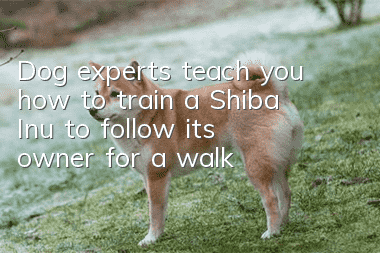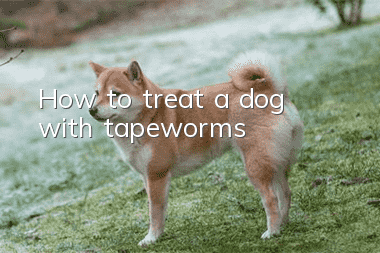Dog experts teach you how to train a Shiba Inu to follow its owner for a walk

First of all, I want to talk about my views on leashes. I definitely don’t recommend using leashes that are tied to the shoulders. I have always used leashes that are tied to the neck when raising dogs, and I don’t use ordinary collars.
I usually don’t put a collar on my dog. Dog walking is about the owner walking the dog, not the dog owner. If I teach the dog the correct walking habits since he was a child, he will not have the trouble of being pulled by the dog.
Since your dog won’t be pulling you to run, you don’t have to worry about the leash tied around the neck being harmful to him. Instead, use the leash tied around the shoulders.
In my opinion, shoulder straps are only used if you want the dog to pull something and run. In general, when walking a dog, you just make it more comfortable for the dog to pull you and run, but instead make him develop the habit of pulling you. You have a bad habit of running, why bother?
There are several stages to practicing dog walking
The first stage (two days)
First, help him tie a traction rope at home. You don’t have to lead him, just let him sit next to you. The main thing is to let him get used to the traction rope. After he can no longer tug of war with the leash, you can take him for a walk at home. After he can naturally follow you, you can start taking him out.
The second stage (one week)
To train him to follow you instead of pulling you, I will let the dog get used to walking on my right side (because there are no cars on the road), and only on my right side. At the beginning, the range can be larger. For example, within a radius of 50 centimeters on my right, if he is within the range, the traction rope is loose (not stretched), and when he leaves this range (the traction rope is stretched), you can use a little more force. , pulling him back into range. If he rushes forward, pull him backwards; if he moves too slowly, pull him forward. Pay attention
It's not "pull" him back, but "pull" ("push" with a little force)
"Pull" means to slowly pull him back with the same force
"Pull" is a momentary application of force
"Pull" has no effect, it will only cause him to have a tug of war with you
The kind of collar I use will tighten when you pull it, and the dog will also tighten when it tug-of-war with you. So if you pull it with a little force, the dog will feel uncomfortable, and he will come back obediently. It may feel a bit cruel at first, but trust me, after a few pulls, your dog will know to walk on your right. Long-term pain is worse than short-term pain. Instead of letting him tug-of-war with you for more than ten years, it is better to let him suffer a few times. You and he can have the fun of walking the dog in the next ten years.
The third stage (two weeks)
Slowly narrow the range until he can only walk to the right of your steps. This is to train him to pay attention to your steps and know thatKnowing your existence, he will stop when you stop and leave when you leave. Constantly stopping and walking, turning left and right, and pulling when you can't keep up. After two weeks of this phase, you can basically walk with your dog easily. Whether or not you want him to accept the fourth phase depends on the individual owner.
The fourth stage (several weeks)
In the previous stage, the dog basically followed your footsteps, but it will still be affected by external forces (other dogs, people, things, things). At this stage, I will deliberately play tricks, knowing that there are other dogs in front of me. I deliberately walked the dog over, and after paying attention to the dog's eyes and finding that his attention was on other dogs, I ran back and pulled the leash a little harder. After training like this for a few weeks, I waited for you to run back. When your dog follows you without any hesitation, you can try not to use the leash in the dead of night.
Another point is that when you call your dog from a young age, whenever he comes to you, you give him a feed as a reward. After his personality becomes more stable, you can try walking the dog if there is no car or person. Let him move around freely and as soon as you call him, he will habitually run back excitedly.
- Things to note when dealing with a new dog
- How to gain weight for dogs
- How to punish Akita dog when it makes a mistake
- Demodicosis symptoms and treatments in dogs
- What can’t Bernese Mountain Dogs eat?
- When do puppies start losing teeth?
- Is neutering a dog permanent and effective?
- Will dogs still eat buried food?
- Harrier pictures_training_raising
- How to prevent several common diseases in Chihuahuas



